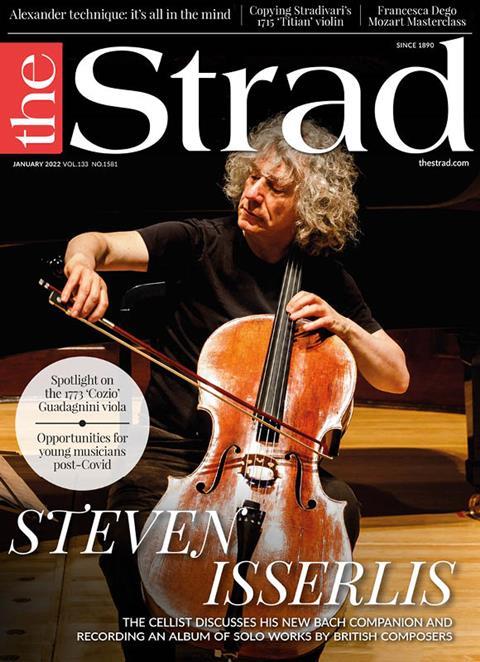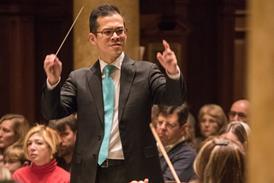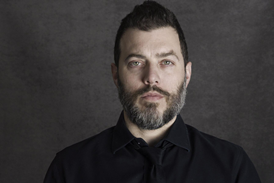Viola professor at Juilliard and Curtis Institute of Music Hsin-Yun Huang offers practical tips for petite musicians and teachers to avoid unnecessary pain and over-exertion

The following extract is from The Strad’s January 2022 issue Technque feature ‘Playing the viola with a small frame’. To read it in full, click here to subscribe and login. The January 2022 digital magazine and print edition are on sale now
When I was a student at the Curtis Institute of Music, my teacher Michael Tree lent me a 16.5-inch viola. It was quite large for me, because I’m only 5’1” tall, and I remember saying, ‘Mr Tree, this is too big! I don’t think that I can play it.’ He just said, ‘Don’t worry. Take it, make it work and don’t hurt yourself.’ That was some of the best advice that anyone has ever given me.
Of course, violas and violists come in different shapes and sizes. I have small hands, long arms and a wide back, which helps me to embrace my instrument. Someone with small hands, a narrow back and short arms might need to downsize, and I really wouldn’t advise playing anything bigger than 16.5 inches. I don’t think I could ever make a 17-inch viola work, and nor would I try. Always try to find an instrument that is proportionate to you:
- First position is a big stretch for a violist with small hands, because the notes are spaced far apart. If this applies to you, look for a viola with a thinner neck or shorter fingerboard.
- Higher positions can also be difficult. If you struggle to reach over the instrument shoulder, look for a viola with a narrower body (it doesn’t have to have a reduced length).
- The bigger your viola, the further its centre of gravity is from your body. If this makes you lean forward, causing tension in your neck or spine, try a smaller instrument.
Everyone has different amounts of flexibility in their joints, so an instrument that suits one person won’t necessarily suit someone else, even if they are of a similar size. There are no rules, so experiment until you find a viola that is comfortable, sounds good and that you can play in all positions without an uncomfortable stretch. If you have small hands, it does not make you a lesser viola player. In fact, it can make you more conscious of staying flexible and loose, and you will always be looking for better technical solutions, without ever becoming complacent. You will learn to use your body as your instrument.
EXERCISES
It is especially important that small viola players warm up at the beginning of every practice session:
- Begin with some stretches to warm up the whole body and improve your physical awareness, whether it’s by doing a little bit of yoga or some qigong
- When you pick up the viola, think of your body as a tree trunk with branches that expand into the space around you, from the upper back. Embrace that space, and build on that feeling as your arm extends out from the elbow on the down bow
- Exercise the fingers daily with 30–40 minutes of scales and double-stops – including chromatics and arpeggios, to help agility – in different keys
Once your mind and body are awake, you will be able to connect more effectively with the music. Everything else will fall into place from there.
TIPS FOR TEACHERS
When I was a student, I met many amazing teachers who simply said, ‘Go, explore, make it work, and don’t hurt yourself’. David Takeno retrained all my string playing fundamentals, with hardly any words; Yehudi Menuhin taught me to respect my body through yoga, and never to give up. Peter Norris questioned my decisions and really taught me to listen. Michael Tree was obsessed with Houdini, believed that there was another solution to everything and was a genius at finding new fingerings. Sam Rhodes taught me to hear and play music from a composer’s point of view.
Thanks to these experiences, I never tell my own students that they have to do anything, because that puts them in a prison. When a student is young, yes, they need guidance, but at some point they also need encouragement to learn to think for themselves and find solutions on their own, suited to their own bodies. We then discuss these ideas and others that they might not have considered in their lessons. It’s much harder for them to think for themselves than it is for them to copy other people, but they’ll also find it more rewarding and fun to come up with their own solutions.
-
This article was published in the January 2022 Steven Isserlis issue
The UK cellist discusses his new Bach companion and recording an album of solo works by British composers. Explore all the articles in this issue . Explore all the articles in this issue
More from this issue…
- Steven Isserlis on Bach and British composers
- 1773 ‘Cozio’ Guadagnini viola
- Alexander technique: it’s all in the mind
- LGT Young Soloists record Philip Glass
- Copying Stradivari’s 1715 ‘Titian’ violin
- Opportunities for young musicians post-Covid
Read more playing content here
-






























No comments yet